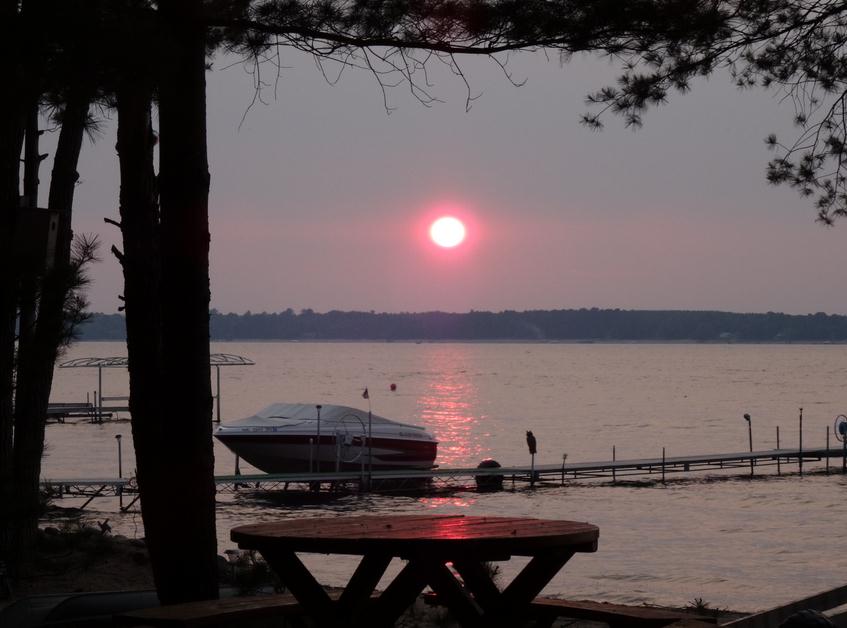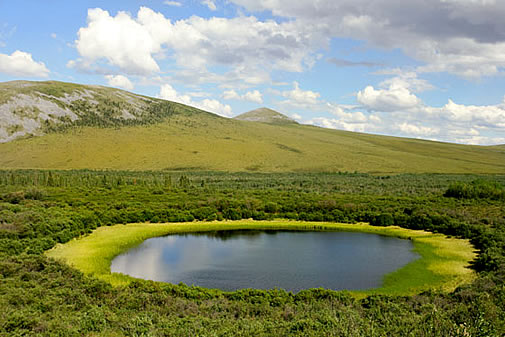59 F. high in the Twin Cities Monday.
48 F. average high on March 28.
41 F. high on March 28, 2015.
March 29, 1986: Record warmth occurs with July-like temperatures. A monthly record high of 83 occurs at the Twin Cities.
The Case of the Disappearing Arctic Cold Front
March Madness is an apt metaphor for our increasingly goofy weather. By the way, how did you do with your brackets this year?
(insert sound of crickets here)
Welcome to the sobering, humbling world of predicting the future. You can analyze statistics until you’re blue in the face, but predicting injuries, which players will rise to the occasion when the pressure is on? Good luck. In spite of data, analytics and models there are still unknown unknowns – things beyond our capacity to predict in advance.
The last 12 months have been the warmest in Minnesota state history, by a considerable margin. A jolt of El Nino and sustained jaw-dropping warmth in the arctic – whatever the cause even the cold fronts have lost much of their oomph.
The much-advertised arctic front next weekend? Never mind. Every new computer run pushes the coldest air farther north and east. We’ll see a glancing blow of chilly air, but I can live with low 40s.
In the meantime we hit 60F today. Showers arrive tonight, spiked with thunder Wednesday before we dry out and cool off Thursday. You may even need a jacket by late week, with temperatures a few degrees below normal.
March is 9F warmer than average, to date.
“Mar-pril”?
Increasingly Windblown. Sustained winds reach 10-20 mph today, possibly topping 30 mph by late evening as the next storm system approaches. The atmosphere may be marginally wet and unstable enough for a T-shower tonight. Source: Aeris Enterprise.

Arctic No-Show. The hostas poking up through my yard are relieved: the core of the coldest air remains north and east of Minnesota looking out 10 days, according to GFS. All the models (including ECMWF) were bringing the CORE of unseasonably cold air over the Upper Midwest and Great Lakes just a couple days ago – some showing a 30-40 F. cold temperature anomaly. No explaining it – but part of me wonders if the models, all of them, are factoring in record warming of the arctic and the impact that (appears) to be having on jet stream winds. GFS 2-meter temperature forecast: NOAA and AerisWeather.
My Kind of Cold Front. Models show highs in the upper 30s Friday, possibly the chilliest day in sight. A couple of nights below freezing are liely by the weekend. No, don’t plant annuals just yet.
Springy Tuesday – Then Cooling Off. European guidance shows a gradual temperature slide later this week; temperatures about 5-10F cooler than average Friday into early next week before a fairly rapid recovery. Source: WeatherSpark.

The Greening of Minnesota. I’m not convinced we’re going to pick up half an inch of rain in the metro by Wednesday night, as 4 KM NAM guidance (above) seems to show. The 00z 12 KM NAM model only prints out about a quarter inch of rain, but it should be just enough to accelerate the greening of your lawn.
NOAA More Aggressive With Rainfall Prediction. The Twin Cities office of the NWS is highlighting the chance of some 1″ rains between tonight and Thursday; a severe threat over Iowa tomorrow.
April Preview. Although not as warm as March (6th warmest in Minnesota history, to date) April continues the mild trend for most of the USA. NOAA’s CFS (Climate Forecast System) model predicts temperatures 2-4F warmer than average next month, statewide. Map: WeatherBell.
Largest Wildfire in State History Ravages Kansas. Here’s an excerpt of an update at ThinkProgress: “…Still Republican Gov. Sam Brownback signed a State of Disaster Emergency declaration for at least five Kansas counties. Brownback said Thursday that the fire was largely contained in Kansas except in Barber County, southwest of Wichita, the state’s largest city. “Things really appear to be going pretty well so far today,” he told the Associated Press. The Barber County fire is about 31 percent contained, according to authorities. Meanwhile, smaller fires were reported in Clark, Meade, Harvey and Reno counties, The Wichita Eagle reported Saturday. Kansas has been suffering from abnormal weather in recent years. And while some recent reports note that Kansas won’t be as affected by climate change as other states, recent temperatures have been unusually warm, making the region suceptible to wildfires...”

Vitamin D and Depression: Where Is All The Sunshine? Here’s a relatively recent study into vitamin D deficiencies and a potential link to depression; hardly a surprise to anyone suffering from SAD (Seasonal Affective Disorder). Here’s an excerpt of a paper at The National Center for Biotechnology Information: “…Assessment of vitamin D status will need consideration of other factors, such as light therapy and sun exposure. Exposure to sunlight accounts for over 90% of the vitamin D requirement for most individuals (Holick, 2004). Amount of exposure to ultraviolet B radiation is affected by latitude, season, and time of the day. It has been reported that sun exposure is greatest in spring to early fall and during sunlight hours (Holick, 2004). Although places closer to the equator have greater sun exposure (Hawaii, Arizona, Florida), recently it has been reported that in even in these areas vitamin D insufficiency persists (Binkley et al., 2007; Jacobs et al., 2008; Levis et al., 2005). Since it is possible that persons who are outdoors may be more physically active, it is important to consider whether sunshine alone or in combination with physical activity is related to improved mood….”
Disaster-Ready. FEMA has a new app that seems like a good addition to your smartphone – like insurance you don’t need it until you need it. You can load a few different locations and have all the information you need at your fingertips, even if the power goes out. The old Boy Scout motto comes to mind. Be Prepared.
If a Power Plant is Built in the U.S., It’s Likely To Be Renewable. Here’s the intro to a Climate Central story: “If a new electric power plant is built in the U.S. these days, chances are it’s renewable — either wind or solar. That’s the gist of a report the U.S. Department of Energy released this week showing that, together, wind and solar accounted for nearly two-thirds of all new electric power plants built in 2015. It’s a trend expected to continue through 2016, even with low natural gas prices likely to keep utilities building plenty of gas-fired power plants, too…”
Graphic credit above: “This graph shows how much wind, solar and natural gas electric power generating capacity was built in 2015 compared to the previous year.” Credit: U.S. Energy Information Administration
Energy Forecasters Consistently Underestimate Wind and Solar. A Critic Explains Why That’s a Problem. Dave Roberts connects the dots at Vox: “…Why do professional energy analysts and agencies have such a tough time getting their arms around wind and solar? Why are they so consistently wrong about renewable energy, in the same direction, over and over again? It’s a complicated issue. I once wrote a long, in-depth post on it, focusing on the (similarly pessimistic and incorrect) forecasts from the International Energy Agency. If you really want to dig in on these questions, you should read it...”
Image credit above: “This is not how it works.” (Shutterstock)
Oil Milestone: Fracking Fuels Half of U.S. Oil Output. CNN Money has the details; here’s a clip: “It recently hit a new milestone in the U.S. Fracking now accounts for more than half of all U.S. oil output, according to the Energy Information Administration. It’s a stunning feat considering fracking made up less than 2% of American oil production in 2000. Hydraulic fracturing technology, more commonly known as “fracking,” paved the way for drilling into America’s enormous shale deposits. It has fueled a dramatic boom in U.S. oil production. Back in 2000, there were just 23,000 fracking wells pumping about 102,000 barrels of oil a day. Now there are 300,000 fracking wells, churning out 4.3 million barrels per day…”
Image credit: EIA and CNN.
How Free Trade Made America Great. The Wall Street Journal has a transcript of recent remarks from Fred Smith, Founder and CEO of FedEx; here’s an excerpt: “…More than three billion people are now connected to the Internet. Billions more have aspirations for a better life and are likely to come online as global consumers. The odds are good, therefore, that today’s remarkable transport systems and technologies will continue to improve and facilitate an even larger global economy as individual trade is becoming almost “frictionless.” History shows that trade made easy, affordable and fast—political obstacles notwithstanding—always begets more trade, more jobs, more prosperity. From clipper ships to the computer age, despite economic cycles, conflict and shifting demographics, humans have demonstrated an innate desire to travel and trade. Given this, the future is unlikely to diverge from the arc of the past...”

The Ultimate Spring Animal Baby Cam Compendium. Bored? If you’re a fan of baby animals there’s plenty to like about this link to Atlas Obscura: “Over the past few weeks, internet viewers have been thrilled by a Washington, D.C.-based eagle cam, showing the birth of two eaglets. But #dceagle cam is one of dozens, probably hundreds of places where you can get your animal fix while futzing around at work. For your viewing pleasure, Atlas Obscura has compiled a list of the upcoming spring hatches and births set to appear on animal cams around the web, and as a massive bonus, we’ve thrown in some cams that are simply always showing animal babies. Also: every other animal cam we could find…”
TODAY: Mild sun, breezy and pleasant much of the day. Winds: S 10-20. High: 61
TUESDAY NIGHT: Showers, slight chance of thunder. Low: 47
WEDNESDAY: Showery rains, wettest day in sight. Winds: SE 10-15. High: 54
THURSDAY: Showers taper, slow PM clearing. Winds: NW 10-15. Wake-up: 38. High: 44
FRIDAY: Chilly, few sprinkles or flurries. Winds: NW 10-20. Wake-up: 34. High: near 40
SATURDAY: Intervals of sun, not bad. Winds: NW 10-15. Wake-up: 29. High: 46
SUNDAY: Overcast, chance of a light mix. Winds: SE 8-13. Wake-up: 31. High: 42
MONDAY: Mostly cloudy, light jacket weather. Winds: E 5-10. Wake-up: 28. High: 41
Climate Stories…
Climate Skepticism Has Lost Major Ground Among Weather Experts. It’s becoming increasingly difficult to dismiss or deny the evidence all around us; here’s the intro to a ThinkProgress story: “Among climate scientists, there’s a consensus that climate change is real and driven by human activity. Among meteorologists and weathercasters, however, that acceptance of climate science has historically been harder to find. That may have finally changed. Some 99 percent of U.S. weathercasters — those who communicate weather forecasts on TV or radio, but who aren’t always trained meteorologists — accept the fact that climate change is happening, according to preliminary findings from a George Mason University’s Center for Climate Change Communication study released Thursday. The study, which has yet to go through the peer review process, comes days after George Mason University released a similar survey that shows that some 96 percent of American Meteorological Society members think climate change is real…”
Photo credit above: Kevin Wolf/AP. Images for the Weather Channel. “Jim Cantore, The Weather Channel on-camera meteorologist and storm tracker, reports on Winter Storm Jonas in Washington, D.C.”
New Survey Finds a Growing Climate Consensus Among Meteorologists. Here’s a snippet from Dr. John Abraham at The Guardian: “…Another important finding is that most meteorologists feel that some of the change can be averted, based on how we react. Small minorities felt that a large amount of change can be averted or that climate change cannot be averted. These views have changed over the years. For instance, almost 20% of meteorologists say their opinion on climate has changed over the past five years. Of that group, the vast majority are more convinced that the climate is changing and they cite a variety of reasons including new research, seeing first-hand evidence, the consensus amongst climate scientists, or from interactions with climate scientists. A final important result is that only 37% of the AMS respondents consider themselves climate experts...”
Photo credit above: “Cars drive through flooded streets behind a High Water sign in Hammond, Louisiana, USA, 11 March 2016. As climate change leads to more extreme weather, more meteorologists will likely take notice.” Photograph: Dan Anderson/EPA.
Arctic Sea Ice Sets Wintertime Record Low Thanks to Global Warming. No, it wasn’t El Nino – at least as far as we know. Something else was heating up arctic waters. Here’s an excerpt from KING5.com in Seattle: “Arctic sea ice set a record wintertime low for the second straight year because of global warming, scientists at the National Snow and Ice Data Center and NASA announced Monday. “I’ve never seen such a warm, crazy winter in the Arctic,” data center director Mark Serreze said in a statement. “The heat was relentless.” Arctic temperatures this winter were up to 15 degrees higher than average, according to NASA...”
Graphic above courtesy of The National Snow and Ice Data Center, which has more details on the record winter ice minimum in the arctic.

How To Talk Global Warming in Plain English. Some good advice from ClimateWire and Scientific American; here’s an excerpt: “…It’s time, many of its past authors say, to consider shifting the assessment away from being a document that tells people what scientists do and do not know about climate change and its risks, and toward something more interactive. Something, many scientists said last week, that explicitly lays out how much time people have to plan, prepare and even pay for the inevitable adaptation. “We could make the goal that it should change the public discourse,” said Susanne Moser, a California-based scientist who worked on the coastal chapter of the last assessment and who studies ways of helping people understand the challenges and risks of climate change. “Do not tell me just how high the sea-level rise is going to get. Tell me how much time I have to solve a very tough problem…”


Published Assessment Concludes Thawing Arctic Permafrost to Impact Climate Change. Tipping points the models don’t anticipate – what could possibly go wrong? Here’s an excerpt of an article at CapeCod.com: “…Woods Hole Research Center scientist Brendan Rogers said, “We are very much in control of the amount of high-latitude carbon that stays in the ground.” The assessment concluded that 85 percent of carbon emissions from the permafrost zone could still be avoided with aggressive international policies, but that window of opportunity is rapidly closing. All the scientists involved agreed that the rate and magnitude of current warming is taking us into uncharted territory in regard to permafrost carbon…”
File image above: NASA.
World Waking Up to Cost of Climate Inaction. Shanghai Daily has the story. What, you don’t read Shanghai Daily? Here’s a clip: “…The summit in Paris was, in his words, a “turning point” showing that countries are finally coming together in a “remarkable way” to tackle climate change. Speaking at a regular forum at Fudan’s School of Management, Stern claimed that agreements reached in Paris illustrate that countries are finally realizing the risks of sitting on their hands and doing nothing about global warming. Specifically, the summit was significant in that delegates pledged to pursue a goal of keeping global warming to two-degrees Celsius above pre-industrial levels — while also pursuing efforts to limit average temperature increases to 1.5 degrees if possible. Citing past scientific studies, the former chief economist of the World Bank warned that a two degree hike in global temperatures could be catastrophic…”
Carbon Emissions Highest in 66 Million Years, Since Dinosaur Age. Here’s the lead to a story at Reuters: “The rate of carbon emissions is higher than at any time in fossil records stretching back 66 million years to the age of the dinosaurs, according to a study on Monday that sounds an alarm about risks to nature from man-made global warming. Scientists wrote that the pace of emissions even eclipses the onset of the biggest-known natural surge in fossil records, 56 million years ago, that was perhaps driven by a release of frozen stores of greenhouse gases beneath the seabed...”
Photo credit above: “A chimney is seen in front of residential buildings during a polluted day in Harbin, Heilongjiang Province, China, January 21, 2016.” Reuters/Stringer.

